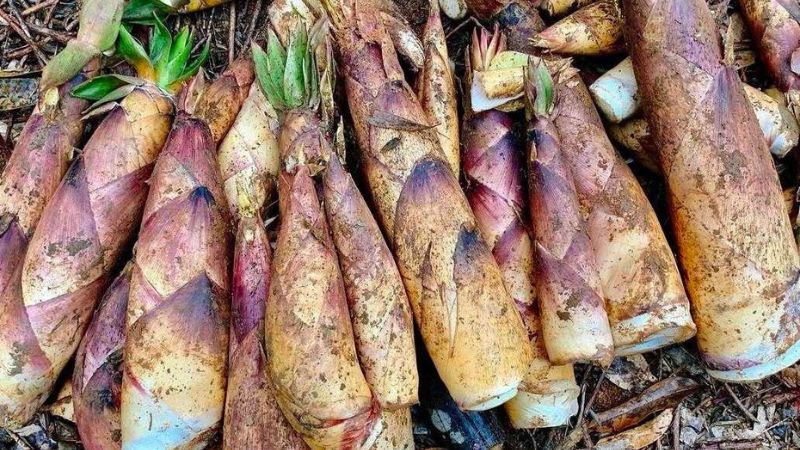Măng Vầu Đắng
1. Overview
Măng vầu đắng, or bitter bamboo shoots, is a signature wild-grown vegetable that embodies the unique culinary identity of Bắc Kạn province in Northern Vietnam. Found mainly in forested and mountainous areas, especially in early spring, these bamboo shoots have a distinctive bitter taste that local people have embraced for generations.
2. Characteristics
-
Origin: Harvested from natural bamboo groves deep in the forests of Bắc Kạn.
-
Appearance: The shoots are long, cylindrical, and pale yellow or light brown once peeled.
-
Taste profile: Naturally bitter at first bite, but the bitterness gives way to a pleasant, slightly sweet aftertaste. This contrast is what makes the dish so memorable.
-
Seasonality: Best harvested from February to April, when the bamboo shoots are tender and flavorful.
3. How It's Prepared
Bitter bamboo shoots are versatile and can be prepared in several ways:
-
Boiled: Boiling helps reduce the initial bitterness. Often served with a dipping sauce made of fermented fish or chili salt.
-
Stir-fried: Commonly cooked with wild herbs, garlic, and sometimes meat such as pork or buffalo.
-
Pickled: Fermented with salt and chili to create a tangy, crunchy side dish that pairs well with rich meat dishes.
-
Soup: Added to clear broths with chicken or pork for a refreshing contrast in flavor.
Locals often soak the shoots in water overnight or boil them with rice water to tone down the bitterness before cooking.
4. Cultural Significance
For the ethnic groups living in Bắc Kạn, especially the Tày and Dao communities, bitter bamboo shoots are not only food but a traditional part of their connection to the forest. They represent:
-
Adaptability: Turning bitterness into flavor, just like turning hardship into strength.
-
Seasonal tradition: Families often gather and share dishes made from măng vầu đắng during spring, marking the end of the cold season.
5. How to Enjoy
Visitors to Bắc Kạn are encouraged to try this unique dish with local rice wine or sticky rice. The flavor might be unfamiliar at first, but for many, it becomes an acquired taste that captures the essence of Northern Vietnamese highland cuisine.




